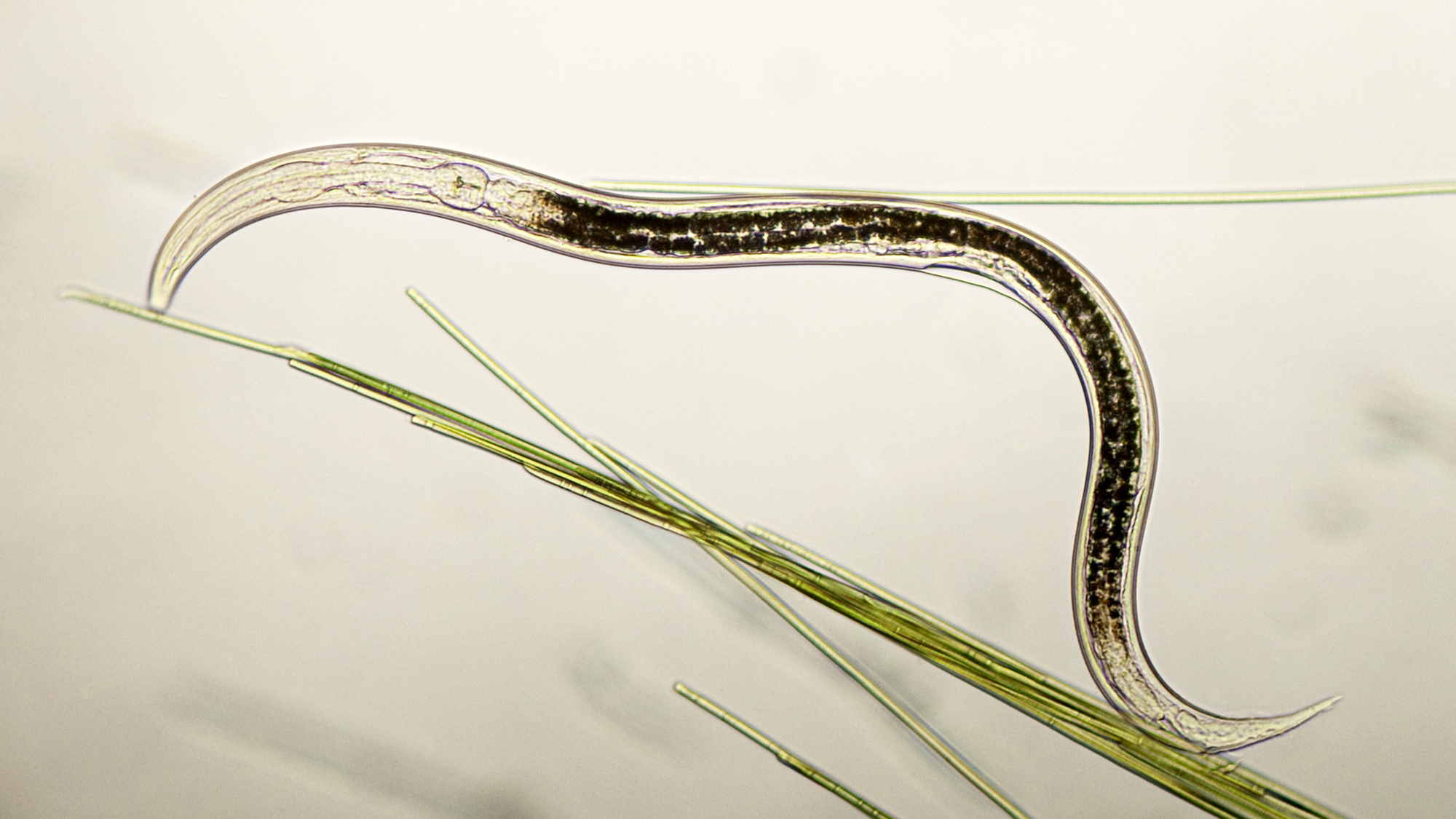

If nematodes have nightmares, they might be dreaming about the terror of being eaten alive by a carnivorous fungus called Arthrobotrys oligospora. The very real fungus can sometimes set gooey traps for these worms. It is one of over 700 known species of carnivorous fungi. New findings on the basic processes behind its unique eating habits are described in a study published November 21st in the open access journal PLoS Biology.
[Related: Parasitic Fungi Can Fuse A Nematode’s Gut Into One Cell.]
Nematodes are not usually the first thing on A. oligospora’s menu. The fungus typically gets nutrients from decaying organic matter. Starvation and the presence of nearby worms can prompt this and other fungi to create traps to capture and eat the worms. Another meat eating fungi named Pleurotus ostreatus or the oyster mushroom even uses a nerve gas as its method of trapping down nematodes.
A. oligospora has a different approach. It generally uses sticky secretions to keep the worms pinned down before they become a meal. Earlier studies have shown some of the biological processes and genetics behind A. oligospora’s predator-prey relationship, but the molecular details of the process have remained generally unclear.
“I think it’s fascinating to consider that right under our feet in the soil, there are micro-predators like A. oligospora are continually evolving new ways to hunt, capture and consume the nematode prey and there is [a] constant evolutionary arms races between these carnivorous fungi and nematodes,” study co-author and molecular biologist Yen-Ping Hsueh tells PopSci.
To investigate, Hsueh and a team from Academia Sinica in Taipei, Taiwan designed a series of lab experiments to pinpoint the genes and processes involved when A. oligospora preys on a nematode worm species called Caenorhabditis elegans. They used a technique called RNAseq to see the level of activity occurring in various fungus genes at different points in time. When A. oligospora first senses a worm, two separate functions increase–DNA replication and the production of ribosomes. These are the structures that build proteins in a cell. Next, activity increases on many of the genes that encode the proteins that likely help the fungus build and use its traps. These traps include secreted worm-adhesive proteins and a family of proteins the team has identified for the first time.

“The most surprising finding was the dramatic expansion and diversification of the DUF3129 gene family in A. oligospora compared to other fungi,” says Hsueh. “We named members of this family ‘Trap Enriched Proteins’ or TEPs, since they localize to the fungal traps and contribute to trap adhesion and nematode capture.”
After A. oligospora has extended filamentous structures called hyphae into the worm to digest it, the activity in the genes that code for a variety of enzymes called proteases also increases. A group called metalloproteases that break down other proteins is increased even more. The team believes this suggests that A. oligospora uses these proteases to aid in digestion of worms like nematodes.
[Related: Nightmare-fuel fungi exist in real life.]
This research could serve as the foundation for more research into other fungal predator-prey relationships and how A. oligospora feeds on these worms.
“Our next steps are to further investigate the molecular function of how traps adhere to nematodes,” says Hsueh. “It’s surprising how the traps catch nematodes in such a short time, and the binding of the traps are strong enough that the nematodes almost never get a chance to escape after being trapped.”
